Quilting cotton fabric is a versatile, medium-weight fabric that you’ll love working with for your quilting projects. It’s made from 100% cotton, offering softness and durability, making it perfect for piecing and layering. You’ll find it easy to cut, sew, and press, helping you create precise, long-lasting quilts with vibrant patterns and colors.
It’s a great beginner sewing fabric! Quilting cotton fabric is a type of cotton fabric specifically designed for quilting projects.
What is Quilting Cotton Fabric?
Quilting cotton is fabric made from 100% cotton.
Quilting cotton fabric is a versatile material used in the creation of quilts, crafts, and various sewing projects. Unlike regular cotton fabric, quilting cotton is specifically designed to meet the demands of quilting, offering durability, ease of use, and a wide range of colorful designs.
Tight weave, lightweight nature, and smooth texture, making it easy to work with for both hand and machine quilting.
Quilting Cotton Fabric Composition
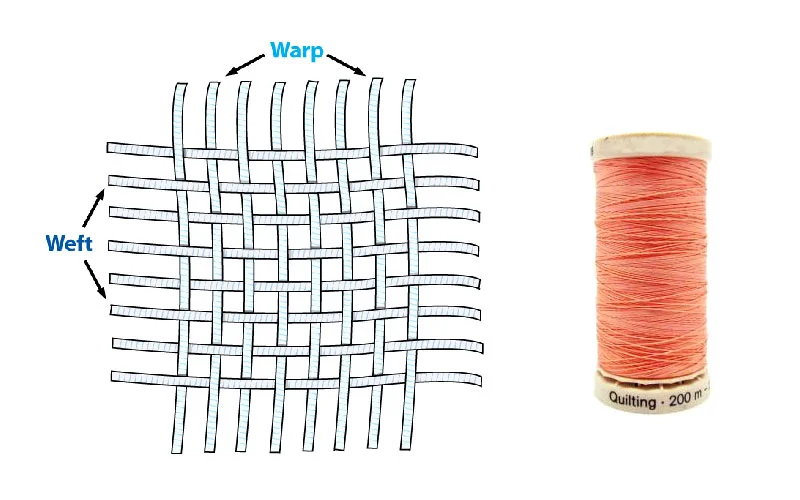
Quilting cotton fabric is typically made from 100% cotton fibers, known for their strength and breathability.
This composition ensures that the fabric is easy to sew, handle, and maintain, making it ideal for both beginner and experienced quilters.
Quilting Cotton Fabric Characteristics
Thread Count: Quilting cotton fabric often features a higher thread count compared to standard cotton, providing a smoother texture and increased durability.
Prints and Patterns: One of the hallmark features of quilting cotton is its vibrant prints and patterns, ranging from classic florals to modern geometrics, allowing quilters to express their creativity.
Pre-washing: Some quilters prefer to pre-wash their quilting cotton to remove any sizing or excess dye, ensuring that the fabric retains its color and shape over time.
Versatility in Quilting
Quilting cotton fabric is prized for its versatility, making it suitable for various quilting techniques and styles.
Piecing
When creating quilt blocks and patterns, quilting cotton provides crisp seams and sharp corners, enhancing the overall appearance of the quilt.
Appliqué
For appliqué projects, quilting cotton offers stability and ease of cutting, allowing quilters to achieve intricate designs with precision.
Backing
Quilting cotton is often used as the backing fabric for quilts, providing a soft and durable foundation that complements the quilt top.
Benefits of Quilting Cotton Fabric
Quilting cotton fabric offers numerous benefits that make it a favorite among quilters and crafters alike.
Durability
Thanks to its tight weave and high-quality fibers, quilting cotton fabric is exceptionally durable, ensuring that quilts withstand years of use and washing.
Ease of Care
Quilting cotton is easy to care for, as it can be machine washed and dried without worrying about shrinkage or fading.
Wide Selection
With countless prints, colors, and designs available, quilters have endless options when it comes to choosing the perfect quilting cotton for their projects.
Affordability
Despite its superior quality, quilting cotton fabric remains affordable, allowing quilters to indulge in their passion without breaking the bank.
Tips for Working with Quilting Cotton Fabric
While quilting cotton fabric is beloved for its versatility and ease of use, there are a few tips to keep in mind to ensure successful quilting projects.
Pre-washing
Consider pre-washing your quilting cotton fabric to remove any sizing or excess dye, preventing color bleeding and ensuring that the fabric maintains its shape.
Ironing
Before cutting and sewing, press your quilting cotton fabric to remove any wrinkles and creases, ensuring precise seams and professional-looking results.
Sharp Tools
Use sharp scissors or rotary cutters when working with quilting cotton fabric to achieve clean, accurate cuts without fraying or distortion.
Stitch Length
Adjust your sewing machine’s stitch length to accommodate the thickness of the quilting cotton fabric, ensuring secure seams without puckering or bunching.
How Quilting Cotton Fabric is Produced?
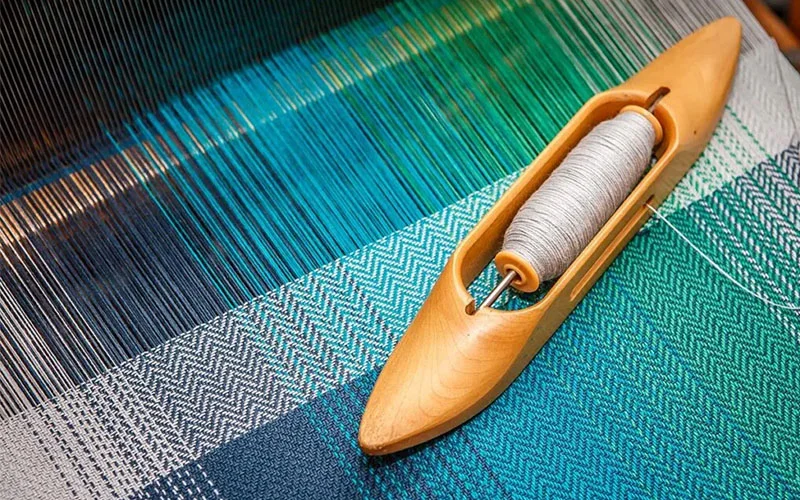
You can think of it as Quilting cotton fabric production begins with the cultivation of cotton plants. These plants are typically grown in regions with warm climates and adequate water supply, such as the southern United States, India, China, and Pakistan. Once the cotton plants reach maturity, they produce fluffy white bolls containing cotton fibers.
The first step in fabric production is harvesting the cotton. Farmers carefully pick the cotton bolls by hand or by using mechanical harvesters, ensuring that the fibers remain intact and undamaged. The harvested cotton is then transported to processing facilities, where it undergoes several stages of cleaning and preparation.
The cotton fibers are separated from the seeds and other plant matter through a process called ginning. This process removes impurities and debris, leaving behind clean, fluffy cotton fibers ready for spinning. The fibers are then carded to align them in parallel strands, creating a soft, uniform texture.
Next, the carded cotton fibers are spun into yarn using spinning machines. During spinning, the fibers are twisted together to form long, continuous threads of yarn. The thickness and twist of the yarn can be adjusted to create different types of fabric with varying characteristics.
Once the yarn is spun, it is ready to be woven into fabric. This is done on large weaving machines that interlace the yarns together to form a stable fabric structure. The weaving process can vary depending on the desired weave pattern, such as plain weave, twill weave, or satin weave.
After weaving, the fabric undergoes finishing processes to enhance its properties and appearance. This may include treatments such as bleaching, dyeing, and printing to add color and decorative designs to the fabric. Additionally, the fabric may be subjected to processes such as mercerization to improve its strength, luster, and dye affinity.
Finally, the finished fabric is inspected for quality and packaged for distribution to manufacturers, retailers, and consumers. Quilting cotton fabric is typically sold in bolts or rolls, ready to be cut and sewn into quilts, crafts, and other sewing projects.
The production of quilting cotton fabric involves a series of carefully controlled processes, from cotton cultivation to fabric finishing, resulting in a versatile and durable material loved by quilters and crafters worldwide.
What is the GSM of Quilting Cotton Fabric?
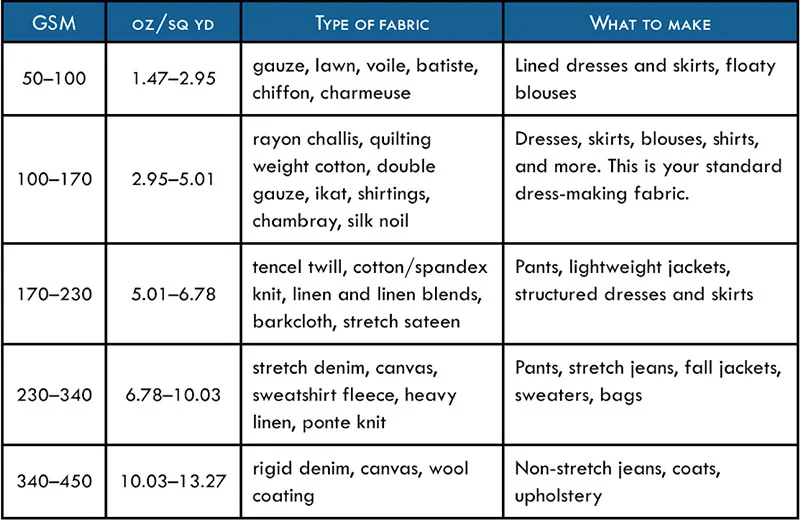
Understanding GSM: A Fundamental Overview
GSM, or grams per square meter, is a measurement unit used to quantify the weight of a fabric per unit area. In the context of quilting cotton fabric, GSM indicates the density or thickness of the material.
Significance of GSM in Quilting
GSM plays a pivotal role in determining the texture, drape, and overall quality of quilting cotton fabric. A higher GSM signifies a denser and sturdier fabric, while a lower GSM indicates a lighter and more breathable material.
Factors Influencing GSM in Quilting Cotton Fabric
Yarn Thickness
The thickness of yarn used in weaving or knitting significantly impacts the GSM of quilting cotton fabric. Finer yarn results in a lower GSM, whereas thicker yarn contributes to a higher GSM.
Weave Structure
The weave structure, such as plain weave or twill weave, affects the density of quilting cotton fabric and consequently influences its GSM.
Fabric Finish
Processes like mercerization or brushing alter the surface characteristics of quilting cotton fabric, thereby influencing its GSM.
Determining Optimal GSM for Quilting Projects
Project Requirements
Consider the specific requirements of your quilting project, such as the desired weight, texture, and drape of the fabric, to determine the appropriate GSM.
Quilt Design and Functionality
Different quilt designs and functions may necessitate varying GSM levels to achieve optimal results. Factor in considerations like quilt size, intended use, and desired aesthetic appeal.
Personal Preferences
Tailor the GSM selection to align with your personal preferences and quilting style. Whether you prefer lightweight fabrics for intricate piecing or heavyweight fabrics for added durability, GSM customization allows for versatility in quilting endeavors.
Practical Applications of GSM in Quilting
Fabric Selection
Utilize GSM as a guiding metric when selecting quilting cotton fabric for your projects. Understanding GSM empowers quilters to make informed decisions based on desired fabric characteristics and project requirements.
Pattern Adaptation
Adjusting GSM enables quilters to modify existing patterns or create custom designs tailored to specific preferences and project specifications.
Enhanced Craftsmanship
By mastering the concept of GSM, quilters can elevate their craftsmanship, resulting in meticulously crafted quilts with superior texture, drape, and overall aesthetic appeal.
What is the Best Cotton Fabric for Quilting?
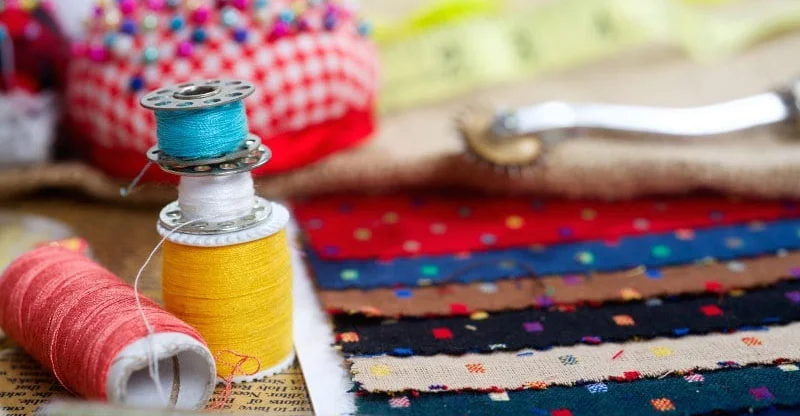
Types of Cotton Fabric for Quilting
What kind of material can you think of?
Not all cotton fabrics are created equal. Let’s explore the various types available and their unique characteristics to help you make an informed decision.
Muslin
Muslin is a plain-woven cotton fabric known for its smooth texture and moderate weight. It serves as an excellent choice for quilt backings and foundation piecing due to its affordability and versatility.
Batik
Batik fabric features stunning hand-dyed designs, making each piece a work of art. Its vibrant colors and intricate patterns add a touch of elegance to quilts, making them truly extraordinary.
Flannel
Flannel cotton, renowned for its warmth and softness, is perfect for cozy quilts and cold-weather projects. Its brushed surface lends a luxurious feel, making it a favorite among quilters during the winter season.
Lawn
Lawn fabric is lightweight and finely woven, offering a delicate and airy texture to quilts. Its smooth finish and crisp drape make it an excellent choice for quilts requiring intricate piecing and appliqué work.
Factors to Consider When Choosing Cotton Fabric
Selecting the best cotton fabric for your quilting project involves considering various factors to ensure optimal results. Here are some key considerations to keep in mind:
Thread Count
Thread count refers to the number of threads per square inch of fabric. A higher thread count typically indicates a smoother and more durable fabric, ensuring superior quality quilts.
Colorfastness
Colorfastness is crucial to prevent colors from fading or bleeding during washing. Opt for cotton fabrics with excellent colorfastness to preserve the vibrancy of your quilt over time.
Pre-Shrinking
Pre-shrinking cotton fabric before quilting is essential to prevent unwanted shrinkage post-creation. Follow manufacturer recommendations for pre-washing and ironing to ensure your fabric is quilt-ready.
Fabric Grain
Understanding fabric grain is essential for proper quilt construction. Ensure your fabric’s grain is straight and aligned to avoid distortion and achieve precise piecing.
Tips for Quilting Success with Cotton Fabric
Now that you’re equipped with valuable insights into cotton fabric selection, here are some additional tips to elevate your quilting endeavors:
Experiment with Different Weaves
Explore various cotton fabric weaves, such as plain, twill, and satin, to discover unique textures and finishes that complement your quilting style.
Mix and Match
Don’t hesitate to combine different cotton fabrics in your quilt projects to add depth, contrast, and visual interest. Mixing solids with prints can create stunning effects and showcase your creativity.
What Are the Applications of Quilting Cotton Fabric?
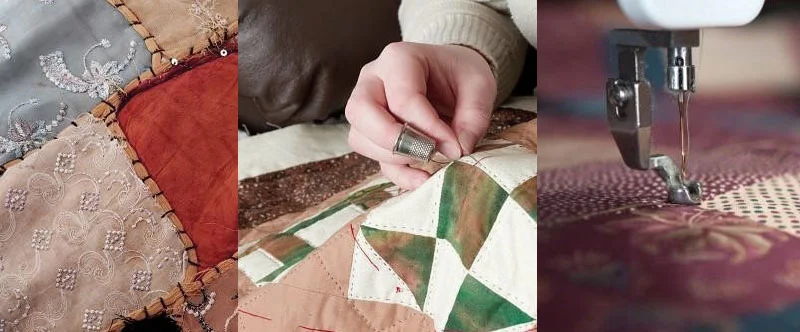
Quilting cotton fabric, with its myriad applications, stands as a cornerstone in the world of crafting and sewing. From fashioning clothing to creating stunning home decor pieces, its versatility knows no bounds.
Applications in Apparel
Quilting cotton fabric finds extensive use in the realm of apparel, offering both style and comfort.
Clothing
From casual tops to elegant dresses, quilting cotton fabric lends itself beautifully to a wide range of garment styles, providing a breathable and comfortable wearing experience.
Accessories
Accessories such as scarves, bags, and headbands crafted from quilting cotton fabric add a touch of charm and sophistication to any ensemble.
Costumes
Its vibrant colors and playful prints make quilting cotton fabric a popular choice for creating elaborate costumes for theatrical productions, cosplay events, and Halloween festivities.
Home Decor and Furnishing
Elevate your living space with the timeless appeal of quilting cotton fabric.
Bedding
Quilts, duvet covers, and pillowcases made from quilting cotton fabric offer both warmth and style, making bedtime a cozy affair.
Curtains
Add a pop of color and personality to your windows with custom-made curtains crafted from quilting cotton fabric, allowing you to express your unique taste in home decor.
Table Linens
Impress your guests with beautifully crafted tablecloths, placemats, and napkins fashioned from durable and easy-to-maintain quilting cotton fabric.
Crafts and DIY Projects
Unleash your creativity with quilting cotton fabric, perfect for a myriad of crafts and DIY endeavors.
Quilting
As the name suggests, quilting cotton fabric is the quintessential material for quilting projects, enabling you to create heirloom-quality pieces that will be treasured for generations.
Sewing
Whether you’re a seasoned seamstress or a novice crafter, quilting cotton fabric is a joy to sew with, offering excellent stitch definition and handling.
Upholstery
Revamp old furniture or breathe new life into tired upholstery with the vibrant hues and captivating patterns of quilting cotton fabric, transforming your living space with ease.
Care and maintenance of Quilting Cotton Fabric
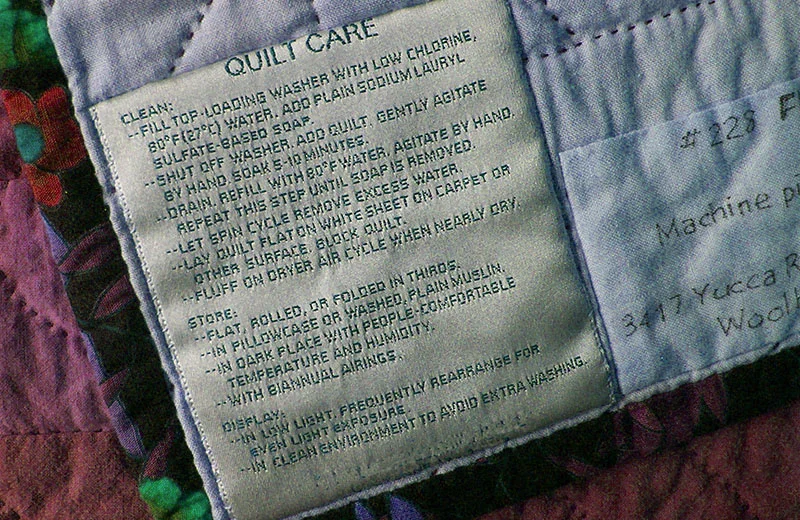
Care and Maintenance Tips
Washing Quilting Cotton Fabric
To preserve the quality of your quilting cotton fabric, it’s important to wash it properly. Always use a gentle detergent and cold water to prevent fading and shrinkage. Avoid using bleach or harsh chemicals, as they can damage the fabric fibers.
Drying Quilting Cotton Fabric
When drying quilting cotton fabric, opt for a low heat setting or air dry to prevent excessive shrinkage. Avoid over-drying, as this can cause wrinkles and weaken the fabric fibers. If necessary, iron the fabric on a low heat setting to remove any wrinkles.
Storing Quilting Cotton Fabric
Proper storage is key to keeping your quilting cotton fabric in pristine condition. Store fabric in a cool, dry place away from direct sunlight to prevent fading and discoloration. Consider using acid-free tissue paper or fabric organizers to prevent creases and wrinkles.
Preventing Fading
To prevent fading, avoid exposing quilting cotton fabric to prolonged sunlight or harsh chemicals. When storing quilts or fabric projects, use acid-free storage containers or garment bags to protect against UV damage.
Handling and Cutting
When handling and cutting quilting cotton fabric, use sharp scissors or rotary cutters to ensure clean, precise cuts. Avoid pulling or stretching the fabric, as this can distort the weave and affect the finished project.
Removing Stains
In the event of a stain, act quickly to remove it from your quilting cotton fabric. Blot the stain with a clean cloth and mild detergent, then rinse thoroughly with cold water. Avoid rubbing the stain, as this can cause it to set into the fabric.
Conclusion
In summary, quilting cotton fabric offers a versatile, durable, and easy-to-work-with material for quilting projects. Its composition of 100% cotton fibers, tight weave, and vibrant prints make it a favorite among quilters of all skill levels.
With its wide range of applications, from quilts to apparel and home decor, quilting cotton fabric remains a timeless staple in the world of sewing and crafting. Its production process ensures quality and craftsmanship, while considerations like GSM and fabric selection contribute to successful quilting endeavors.
Ultimately, quilting cotton fabric embodies creativity, tradition, and the joy of quilting, inspiring quilters to create beautiful, cherished pieces that add warmth and beauty to any space.
FAQ
What makes quilting cotton fabric different from regular cotton fabric?
Quilting cotton fabric is specifically designed for quilting projects, with features like a tighter weave, higher thread count, and vibrant prints and patterns that distinguish it from regular cotton fabric.
What are the characteristics of quilting cotton fabric?
Quilting cotton fabric is lightweight, easy to handle, and has a smooth texture, making it ideal for creating precise seams and intricate quilt blocks. It comes in a wide range of colors, prints, and patterns, allowing quilters to express their creativity.
What are the applications of quilting cotton fabric?
Quilting cotton fabric is primarily used for quilting projects, but it’s also suitable for various other sewing projects such as apparel, home decor, accessories, and crafts.
How is quilting cotton fabric produced?
Quilting cotton fabric production involves cultivating cotton plants, ginning the cotton fibers, spinning yarn, weaving fabric, and finishing processes like bleaching, dyeing, and printing.
What is the best cotton fabric for quilting?
There are various types of cotton fabric suitable for quilting, including muslin, batik, flannel, and lawn. The best choice depends on factors like thread count, colorfastness, and project requirements.
How do you care for quilting cotton fabric?
Quilting cotton fabric should be washed with gentle detergent and cold water to prevent fading and shrinkage. It’s important to avoid bleach and harsh chemicals, and to air dry or use a low heat setting when drying.
